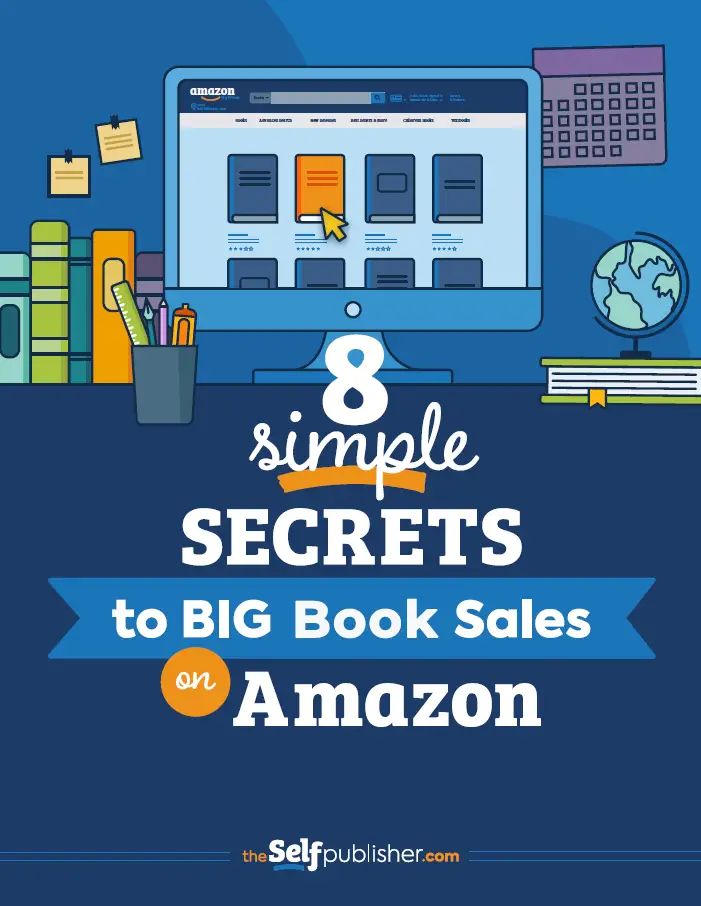Struggling with coming up with the perfect title for your book? You’re not alone. In a few words, you have to catch the interest of potential readers and, hopefully, get them excited to read your book. Why does a great book title matter?
Because not only will it give readers a quick impression of what your book might be about, but it will also affect the way search engines find and rank your book. There’s nothing worse than writing a terrific book, only to have it sink into the murky depths of undiscoverability.
Coming up with the perfect title is not easy! But there are obvious and practical considerations that will help you in this endeavor. Writers know they need a great cover design for their book, but a key part of that is the title. But how much does your title matter?
If a reader is looking for a book in a specific genre, and the cover design well fits the genre, do they care about titles? This is a great question, and the answer to your book title idea is going to depend first on one key consideration—whether the book is fiction or nonfiction.
How to Come Up with Nonfiction Book Title Ideas
Want to sell more books? Click here to get your free copy of 8 Simple Secrets to Big Book Sales on Amazon
Nonfiction books are all about titles. Sure, depending on the topic or category, the cover design might hold more weight. If you are writing a nonfiction travel series about exotic places, for example, the imagery on your covers depicting sublime locales may sway potential readers more than your simple title announcing “The 100 Best Resorts in the Caribbean.”
Surely it’s the gooey three-tiered chocolate cake that will get baking enthusiasts clicking the Buy button on a recipe book rather than the title “Best Chocolate Cakes Ever.”
But for most nonfiction books, including memoirs, the draw is in the topic of the book. Bestsellers in nonfiction have carefully crafted titles and subtitles. Generally, the title is short and catchy, aimed at a specific audience and hinting at the crux of the topic. The subtitle’s role is to explain the title.
For example, look at some of these best-sellers:
- Behave: The Biology of Humans at Our Best and Worst
- The Tipping Point: How Little Things Can Make a Big Difference
- White Fragility: Why It’s So Hard for White People to Talk About Racism
- Bad Blood: Secrets and Lies in a Silicon Valley Startup
- My Anxious Mind: A Teen’s Guide to Managing Anxiety and Panic
Not all nonfiction has subtitles.
But see how a great nonfiction title shines a spotlight on the topic of the book with these examples:
- Emotional Intelligence 2.0
- Political Correctness
- The Education of an Idealist
- The Liberal Media Industrial Complex
You get the point. People read nonfiction for information. It stands to reason, then, that it is essential for an author of a nonfiction book to craft a title (and, if desired, a subtitle) that informs. What is your nonfiction book about?
Can you distill it down to one or two words?
Try making a list of words and phrases that best convey your topic. Keep at it until you find a catchy, attention-getting title, one that clearly conveys the subject of your book.
Don’t opt for a title that is merely clever, wordy, and/or vague. You want to make it easy for online search engines to pick it up and top the search results when customers type in your topic.
How to Come Up With Fiction Story Title Ideas
Want to sell more books? Click here to get your free copy of 8 Simple Secrets to Big Book Sales on Amazon
It may seem that fiction titles are not as important as nonfiction titles. Or as important as a catchy cover design. But they are.
While best-selling nonfiction titles run the gambit on length, with most relying on their explanatory subtitle to drive home the theme or topic of their books, fiction authors have one primary concern when it comes to deciding on a book title, whether for a novel, a novella, or a short-story collection: genre.
If you do a search for YA romance best-sellers, you’ll be hard-pressed to find a title longer than three words.
Here are some that come up in my search: That Boy, Hushed, Breathe, Outcast, Lines, Rules, Broken Wings, and Love Me.
What about popular thrillers? Their titles, while varying in length, hint at suspense, using words or phrasing that often creates a mood. Short, punchy titles are characteristic of suspense titles. I’m a big fan of Lisa Gardner’s thrillers.
Here are some of her titles:
- Alone
- Hide
- Find Her
- Live to Tell
- Never Tell
- Catch Me
- Fear Nothing
- Say Goodbye
- The Killing Hour
- Gone
- Crash and Burn
Often best sellers in mystery, suspense, and thrillers have fairly boring cover designs.
They’ll have dark ominous colors, maybe an image—a partial face, a shattered window, a door to a house. But you’ll see very little hinting at the story in those geometric blocks of color.
Contrast that to the typical best-selling bodice ripper in the romance genre. I wonder if readers even notice the titles. The covers are overpowered with lavishly painted characters in the throes of passion, hair and clothes flying and, depending on the heat, a certain amount of skin and revealing body parts.
All this to say: your fiction book title must fit your genre. Epic Fantasy titles will be much different from YA Paranormal Fantasy titles or Shapeshifter Fantasy titles.
It behooves writers to take time to drill deep into the market to determine their niche genre and make a (long) list of best-selling titles before settling on one for their current project.
The same goes for nonfiction writers. Then study the list of titles and see what they have in common.
Other Fiction Title Considerations
In addition to aligning your title to genre, you’ll score extra points if you can also utilize some of these elements:
- Theme. Not only do great writers draw out the themes in their stories, they also choose a title that reflects their theme. The classic Gone with the Wind by Margaret Mitchell showcases the perfect title for this sweeping story of what happened to the Southern way of life when the Civil War broke out. Other examples: Good Enough by Jen Petro-Roy (about a girl who has an eating disorder because she doesn’t feel good enough), Kelly Rimmer’s The Things We Cannot Say (a teen girl in a Russian refugee camp during WWII must keep silent about her Polish fiancé–described as “a reminder of the devastation when truth is silenced”).
- Motif. A motif is a repeated element in a story. It can be a word or phrase, an object, a concept, or a living thing. Using an important motif from the story in your title adds weight and interest. Examples: Pat Conroy’s The Prince of Tides, Diane Setterfield’s The Thirteenth Tale, Scott Westerfeld’s Ugglies, Pretties, and Specials.
For one of my client’s novels, we played around with the motif of a cheap link bracelet the main character was given by her derelict mother, which broke. The story is about a Russian girl who is adopted by an American family and finally embraces her new life. Her foster mother gives her a beautiful silver bracelet at the end of the story. The original title was vague, but the new title, Scattered Links, perfectly tied in the motif of the bracelet and the image of a broken family.
- Conflict. Highlighting the inherent conflict or opposition in your novel by showcasing it in the title can blow it up and make it memorable. Examples: Suzanne Collins’s The Hunger Games, Peter Benchley’s Jaws, John Nichols’s The Milagro Beanfield War.
- Premise. Hinting what the premise is about creates curiosity and mystery. Jodi Picoult is a master at this. Some of her titles: Plain Truth (a murder takes place among the Mennonites, also called the “Plain People”), Vanishing Acts (a woman discovers her father had kidnapped and raised her without telling her the truth), and Keeping Faith (a girl named Faith manifests the stigmata, and her mother faces losing custody of her). By using both the premise technique and a play on words, her titles are memorable and intriguing. Other examples: Stephen King’s Needful Things, Pet Sematary, The Green Mile; Lisa Jewell’s Then She Was Gone; Christopher Greyson’s The Girl Who Lived, Markus Zusak’s The Book Thief.
- Lyrical. Titles that evoke imagery, use alliteration, or take readers by surprise by the choice of words can feel important or sublime. We see this often with literary fiction, which places strong emphasis on language and wordsmithing. Examples: Anthony Doerr’s All the Light We Cannot See; Michael Connelly’s The Wrong Side of Goodbye; Inglath Cooper’s And Then You Loved Me; G.R.R. Martin’s A Clash of Kings, A Storm of Swords.
How to Know If You Have a Book Title That Will Sell
Some writers “test” their titles by asking for responses on social media or running them by their friends.
Others use a polling site like PickFu to get feedback on their story title ideas. Here’s why I feel that’s a bad idea.
Everyone has a different taste. More than likely you won’t get a consensus on the perfect title. People might pick a clever-sounding title, but if they haven’t read your manuscript, they won’t be able to tell you if it’s an appropriate one that perfectly represents your story.
Sure, you can give them a synopsis, and that might help. But keep in mind, if these “judges” of your title ideas are not successful authors in your genre or seasoned editors with publishing houses, their opinions are going to be solely subjective rather than professional.
And while a title that many like might indicate potential interest in your story, you’re leaning on guesswork instead of homework. And what’s that homework? Drilling into best-selling titles in your niche genre, as I noted above.
Sure, ask your friends what they think. If they all hate the title, maybe you still have some brainstorming to do. But you are the best person to decide if your title conveys your genre and hints at the topic or theme of your story. Your cover is so important to success, but remember: your title is part of that cover, so take the time to come up with your perfect title so your book will have the best chance at being discovered and exciting a potential reader.


